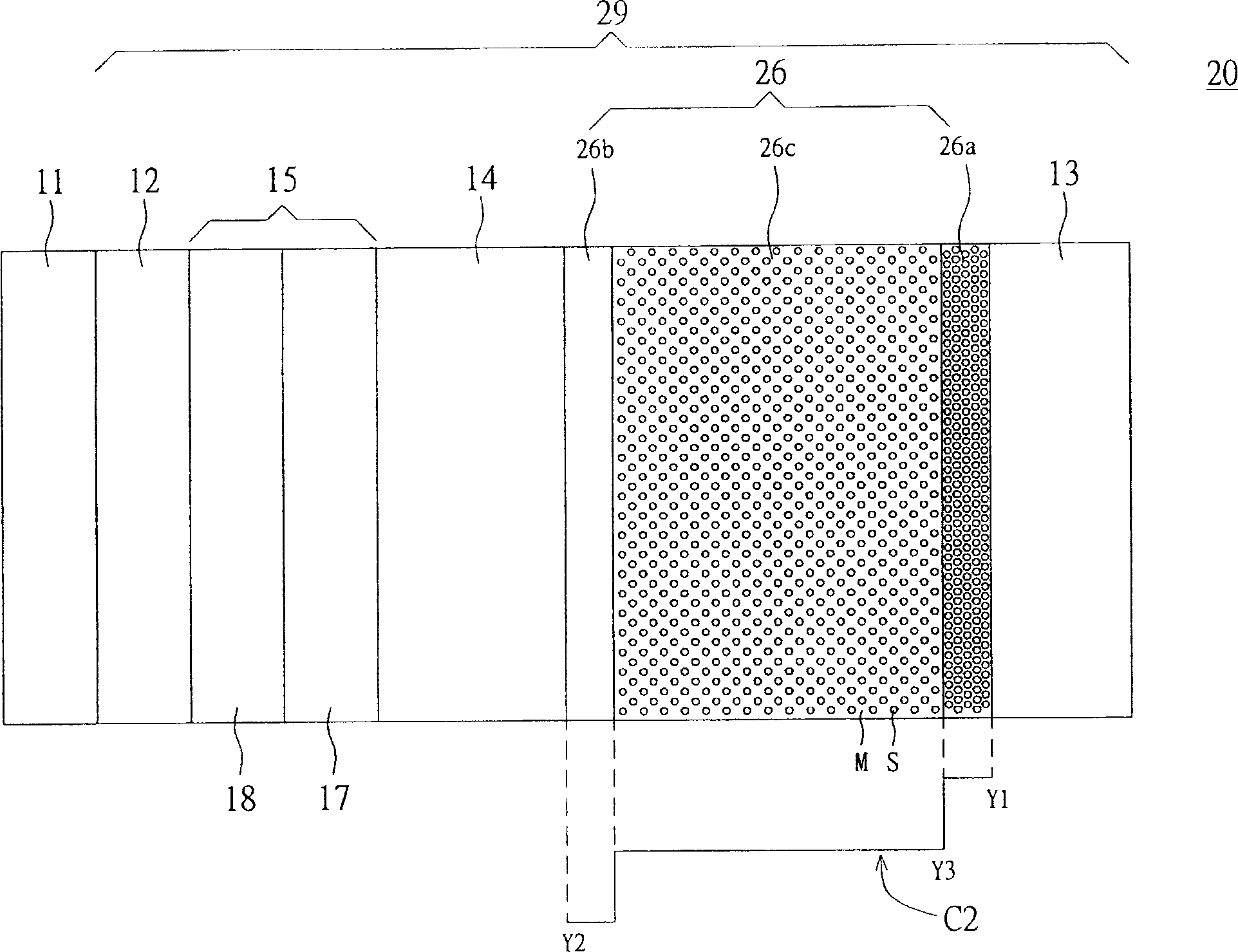Organic electrolumineescence component and display device containing said organic electroluminescence component
A technology for electroluminescent elements and display devices, applied in electroluminescent light sources, electrical components, electrical light sources, etc., can solve the problem of severe metal doping, unsuitability for large-scale applications, and reduced luminous efficiency and operating life of components. question
- Summary
- Abstract
- Description
- Claims
- Application Information
AI Technical Summary
Problems solved by technology
Method used
Image
Examples
Embodiment 1
[0033] Please refer to figure 1 , shows a cross-sectional view of a display device including an organic electroluminescent device (OELD) according to Embodiment 1 of the present invention. exist figure 1 Among them, the display device 10 includes a substrate 11 and an organic electroluminescent element 19, the organic electroluminescent element 19 is arranged on the substrate 11, and includes an anode 12, a cathode 13, a light-emitting layer 14, a hole source 15 and An electron source 16 . Wherein, the organic electroluminescent element 19 is illustrated by taking the anode 12 disposed on the substrate 11 as an example, but the technology of this embodiment is not limited thereto. For example, the organic electroluminescent element 19 is disposed on the substrate 11 with the cathode 13 . The light emitting layer 14 is disposed between the anode 12 and the cathode 13 , and the hole source 15 is disposed between the anode 12 and the light emitting layer 14 . The electron sou...
Embodiment 2
[0045] Please refer to figure 2 , shows a cross-sectional view of a display device including an organic electroluminescent element according to Embodiment 2 of the present invention. The difference between the display device 20 of the present embodiment and the display device 10 of the first embodiment lies in the organic electroluminescent element 29, and the organic electroluminescent element 29 of the present embodiment is different from the organic electroluminescent element 19 of the first embodiment At the electron source 26 . As for the other same constituent elements, the reference numerals will continue to be used and will not be repeated.
[0046] exist figure 2 Among them, the electron source 26 is disposed between the cathode 13 and the light emitting layer 14, and is composed of at least one organic material M and at least one salt S. The salt S has a spatially variable concentration C2 in the electron source 26 such that the concentration Y1 of the salt S at...
Embodiment 3
[0053] Please refer to image 3 , shows a cross-sectional view of a display device including an organic electroluminescence element according to Embodiment 3 of the present invention. The difference between the display device 30 of the present embodiment and the display device 20 of the second embodiment lies in the organic electroluminescent element 39, and the organic electroluminescent element 39 of the present embodiment is different from the organic electroluminescent element 29 of the second embodiment At the electron source 36 . As for the other same constituent elements, the reference numerals will continue to be used and will not be repeated.
[0054] exist image 3 Among them, the electron source 36 is disposed between the cathode 13 and the light emitting layer 14, and is composed of at least one organic material M and at least one salt S. The salt S has a spatially variable concentration C3 in the electron source 36 such that the concentration of the salt S is g...
PUM
 Login to View More
Login to View More Abstract
Description
Claims
Application Information
 Login to View More
Login to View More - R&D
- Intellectual Property
- Life Sciences
- Materials
- Tech Scout
- Unparalleled Data Quality
- Higher Quality Content
- 60% Fewer Hallucinations
Browse by: Latest US Patents, China's latest patents, Technical Efficacy Thesaurus, Application Domain, Technology Topic, Popular Technical Reports.
© 2025 PatSnap. All rights reserved.Legal|Privacy policy|Modern Slavery Act Transparency Statement|Sitemap|About US| Contact US: help@patsnap.com



